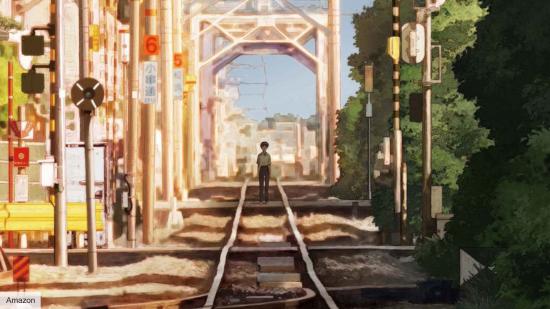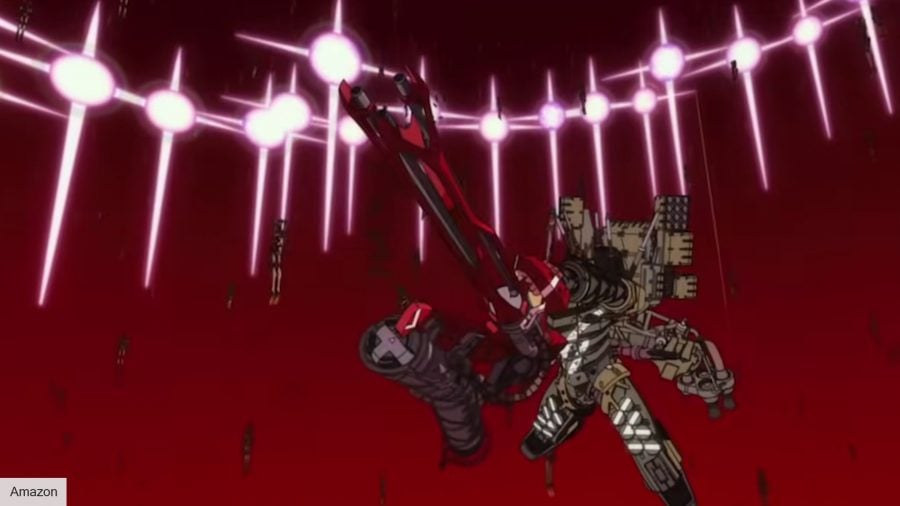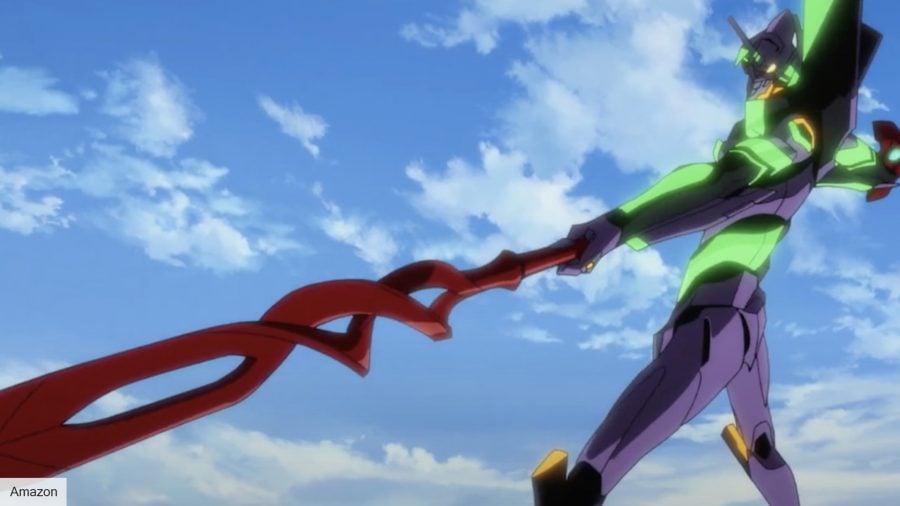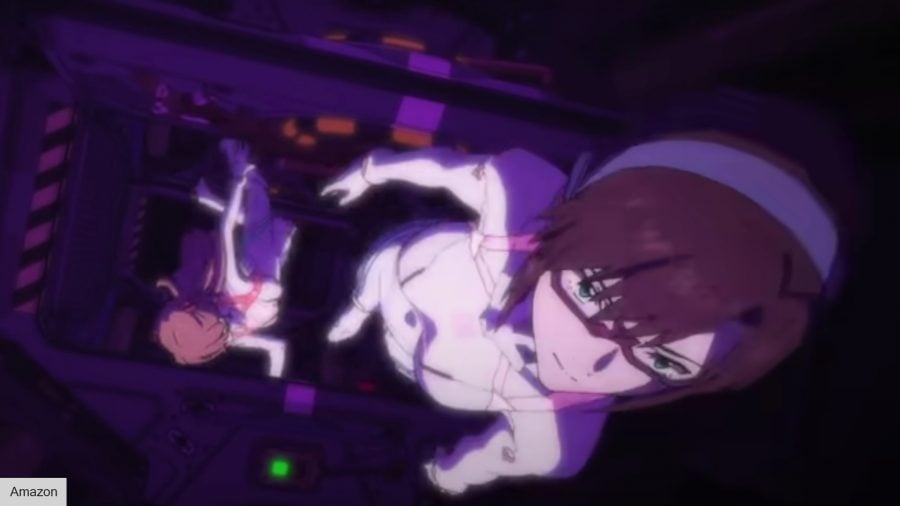What happens in the ending of Evangelion: 3.0+1.0 Thrice Upon A Time? Needless to say, it’s been a long road for Shinji Ikari. Since landing in Tokyo-3 at the start of Hideaki Anno’s anime series, he’s gone on to save the world, nearly destroy the world, and live through a few nightmares in the process.
But now, his story, and that of Asuka Langley, Rei Ayanami, Misato Katsuragi, and everyone else, comes to an end with the fourth installment of the Rebuild of Evangelion. Started back in the early 2000s, Anno’s epic anime movie quadrilogy has retold and reshaped Evangelion in mind-bending ways, and the last film is no different. Though it starts gentle, by the end there’s as much to consider to think over as ever.
What does Shinji choose in the end? What does that mean for everyone else? What does the last shot actually mean? And will there be more. You likely have questions, and we have answers. Here’s the ending to Thrice Upon a Time completely broken down.
What happens in the Evangelion: 3.0+1.0 Thrice Upon A Time ending?
After Rei dies, Shinji is inspired to join WILLE in battling NERV and preventing the Fourth Impact. He accompanies Asuka on WILLE’s ship the Wunder, and they head to Antarctica to battle Gendo Ikari, Shinji’s father and NERV commander. Asuka and Mari lead the ensuing skirmish, as Shinji is held in isolation due to him almost starting the Third Impact 14 years prior.
However, Asuka and her EVA are incapacitated, and during a stand-off between Misato and Ritsuko and Gendo aboard the Wunder, Shinji escapes and volunteers to enter an EVA to defeat his father. Other SEELE members who still resent Shinji try to stop him with a gun. Misato takes the bullet instead, and while injured, she forgives him for what happened, and lets him take EVA-01 out against Gendo.
SPACE! The best science fiction movies
Two battles now happen simultaneously: the Wunder and Mari in EVA-08 deal with swarms of NERV drones outside, while Shinji and Gendo fight on a dreamlike plane where they each pilot EVA-01 wielding one of the holy spears. The EVA-01s go blow for blow, as Gendo goads Shinji about being his match. Eventually Shinji overpowers him, and they transfer to the train car often used to represent Shinji’s psyche.
Gendo finally talks about growing up introspective, but how Yui, Shinji’s mother, caused him to open up, and the grief after her death was so devastating, he dedicated himself to finding a way back to her. The Human Instrumentality Project, moving all of mankind into a higher form of consciousness, was that solution.
Shinji comforts him, and we get a montage of other characters receiving closure. Asuka has her feelings for Shinji reciprocated, and Kaworu, who’s confronted by Misato’s ex-lover Ryoji about selfishly wanting Shinji to pilot EVA-13 in Evangelion: 3.0 You Can (Not) Redo. Kaworu reveals this has been a repeating cycle, meaning all the previous versions of Evangelion we’ve gotten are canonical to each other. Gendo leaves the train car as a sign of long sought after acceptance. This is all happening inside the head of a giant Rei clone the Wunder is trying to break through.
More anime: How to watch Dragon Ball
The Wunder has been turned into a vehicle for the last holy spear, and Misato pilots it straight into the giant Rei’s eye, sacrificing herself, but giving Shinji the weapon he needs to start another cataclysmic event. This time, he decides to rid the world of EVAs, and create a Neon Genesis – a new world.
He explains this to the spirit of the Yui, and the original Rei, while a projector plays imagery from across the history of Evangelion. He leaves the room to initiate the reset, and the next time we see him, it’s him and Mari at a train station. Kaworu, Rei, and Asuka are on the other side of the platform, and the two sides don’t seem to recognise each other. Shinji and Mari leave in a gorgeous shot of their animated selves superimposed over the real world, and the credits roll in a peaceful world. Our world.
Are all the versions of Evangelion connected?
According to what Kaworu says, yes. It’s only a couple of lines, during a part where lots of information is being thrown around, but the gist is that every iteration of Evangelion has been its own cycle, as represented by the long line of coffins either side of the one he awakens in.
We can surmise that every time Anno has rebooted the plot, which is three in terms of movies and sci-fi series, it’s been a new cycle, hence the contrasting endings. Perhaps the Human Instrumentality Project is a kind of metaphysical reincarnation, where we repeat our lives again? Or there’s something the power of the Angels and the EVAs Gendo and NERV don’t understand that distorts time and space?
More to binge: The best TV series on Netflix
Whatever the case, yes, every Evangelion timeline is officially canon. Feel free to reference this next time the topic comes up in heated debate.
Is there an Evangelion: 3.0+1.0 Thrice Upon A Time post-credits scene?
No, Thrice Upon A Time does not have a post-credits scene. So far, Evangelion: 2.0 You Can (Not) Advance is the only movie in the franchise to have a substantial scene after the credits. However, the credits are still worth sitting through.
You can see all the names of the many people who made this wonderful film possible, and you get to hear ‘One Last Kiss’ by Hikaru Utada. That last part’s a plus or a minus depending on your tolerance for pop music, mind.
Will there be more Evangelion?
This is a trickier question. Shinji’s story is done, and Rebuild of Evangelion ends in such a way that Anno makes it clear he doesn’t want to revisit this aspect of the universe. But while doing press for Thrice Upon A Time, he told outlets that he thinks there’s potential for more stories in the future.
“There’s always the 14-year gap in the story, so in some form, I want to shed light into that,” Anno said, referring to the jump between You Can (Not) Advance and You Can (Not) Redo. Watching the world descend into near-apocalyptic decay, and seeing how WILLE comes together is certainly fertile ground from a narrative perspective.
But that leaves no room for Shinji, who was missing that entire time. If that’s what you’re looking for, that much is done for good.



